1. Colosimo C, di Lella GM, Tartaglione T, Riccardi R. Neuroimaging of thalamic tumors in children. Childs Nerv Syst. 2002; 18:426–439. PMID:
12192502.

2. Cuccia V, Monges J. Thalamic tumors in children. Childs Nerv Syst. 1997; 13:514–520. PMID:
9403198.

3. Di Rocco C, Iannelli A. Bilateral thalamic tumors in children. Childs Nerv Syst. 2002; 18:440–444. PMID:
12192503.

4. Fernandez C, Maues de Paula A, Colin C, et al. Thalamic gliomas in children: an extensive clinical, neuroradiological and pathological study of 14 cases. Childs Nerv Syst. 2006; 22:1603–1610. PMID:
16951965.

5. Puget S, Crimmins DW, Garnett MR, et al. Thalamic tumors in children: a reappraisal. J Neurosurg. 2007; 106(5 Suppl):354–362. PMID:
17566201.

6. Jeelani O, Dirks P. Thalamic tumors. In : Richard Winn H, editor. Youmans and Winn neurological surgery. 7th ed. Elsevier;2017. Ch.208.
7. Bilginer B, Narin F, Iśıkay I, Oguz KK, Söylemezoglu F, Akalan N. Thalamic tumors in children. Childs Nerv Syst. 2014; 30:1493–1498. PMID:
24752707.

8. Zinn PO, Colen RR, Kasper EM, Burkhardt JK. Extent of resection and radiotherapy in GBM: A 1973 to 2007 surveillance, epidemiology and end results analysis of 21,783 patients. Int J Oncol. 2013; 42:929–934. PMID:
23338774.

9. Steiger HJ, Götz C, Schmid-Elsaesser R, Stummer W. Thalamic astrocytomas: surgical anatomy and results of a pilot series using maximum microsurgical removal. Acta Neurochir (Wien). 2000; 142:1327–1336. PMID:
11214625.

10. Kis D, Máté A, Kincses ZT, Vörös E, Barzó P. The role of probabilistic tractography in the surgical treatment of thalamic gliomas. Neurosurgery. 2014; 10(Suppl 2):262–272. PMID:
24594925.

11. Kramm CM, Butenhoff S, Rausche U, et al. Thalamic high-grade gliomas in children: a distinct clinical subset? Neuro Oncol. 2011; 13:680–689. PMID:
21636712.

12. Steinbok P, Gopalakrishnan CV, Hengel AR, et al. Pediatric thalamic tumors in the MRI era: a Canadian perspective. Childs Nerv Syst. 2016; 32:269–280. PMID:
26597682.

13. Buckner JC. Factors influencing survival in high-grade gliomas. Semin Oncol. 2003; 30(6 Suppl 19):10–14.

14. Simpson JR, Horton J, Scott C, et al. Influence of location and extent of surgical resection on survival of patients with glioblastoma multiforme: results of three consecutive Radiation Therapy Oncology Group (RTOG) clinical trials. Int J Radiat Oncol Biol Phys. 1993; 26:239–244. PMID:
8387988.

15. Louis DN, Perry A, Reifenberger G, et al. The 2016 World Health Organization Classification of Tumors of the Central Nervous System: a summary. Acta Neuropathol. 2016; 131:803–820. PMID:
27157931.

16. Sai Kiran NA, Thakar S, Dadlani R, et al. Surgical management of thalamic gliomas: case selection, technical considerations, and review of literature. Neurosurg Rev. 2013; 36:383–393. PMID:
23354786.

17. Stupp R, Mason WP, van den Bent MJ, et al. Radiotherapy plus concomitant and adjuvant temozolomide for glioblastoma. N Engl J Med. 2005; 352:987–996. PMID:
15758009.

18. Tarbell NJ, Friedman H, Polkinghorn WR, et al. High-risk medulloblastoma: a pediatric oncology group randomized trial of chemotherapy before or after radiation therapy (POG 9031). J Clin Oncol. 2013; 31:2936–2941. PMID:
23857975.

19. Bernstein M, Hoffman HJ, Halliday WC, Hendrick EB, Humphreys RP. Thalamic tumors in children. Long-term follow-up and treatment guidelines. J Neurosurg. 1984; 61:649–656. PMID:
6088730.
20. Beks JW, Bouma GJ, Journée HL, et al. Tumours of the thalamic region. A retrospective study of 27 cases. Acta Neurochir (Wien). 1987; 85:125–127. PMID:
3591474.
21. Cinalli G, Aguirre DT, Mirone G, et al. Surgical treatment of thalamic tumors in children. J Neurosurg Pediatr. 2018; 21:247–257. PMID:
29271729.

22. Moshel YA, Elliott RE, Monoky DJ, Wisoff JH. Role of diffusion tensor imaging in resection of thalamic juvenile pilocytic astrocytoma. J Neurosurg Pediatr. 2009; 4:495–505. PMID:
19951034.

23. Tournier JD, Calamante F, King MD, Gadian DG, Connelly A. Limitations and requirements of diffusion tensor fiber tracking: an assessment using simulations. Magn Reson Med. 2002; 47:701–708. PMID:
11948731.

24. Bizzi A. Presurgical mapping of verbal language in brain tumors with functional MR imaging and MR tractography. In : Pia Sundgren M, editor. Advanced imaging techniques in brain tumors. Elsevier;2009. p. 573–596.
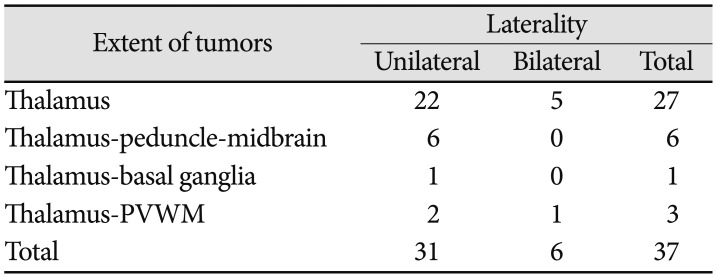
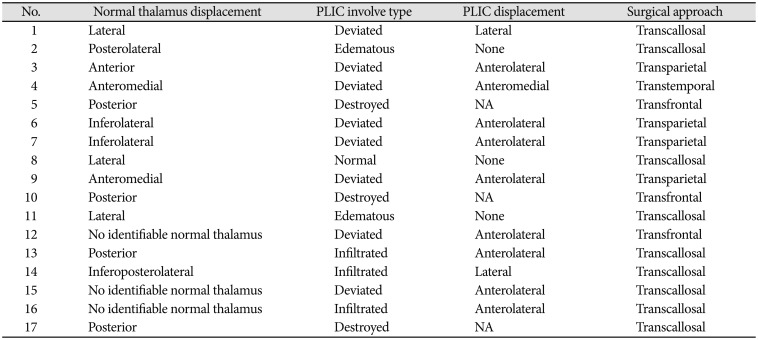
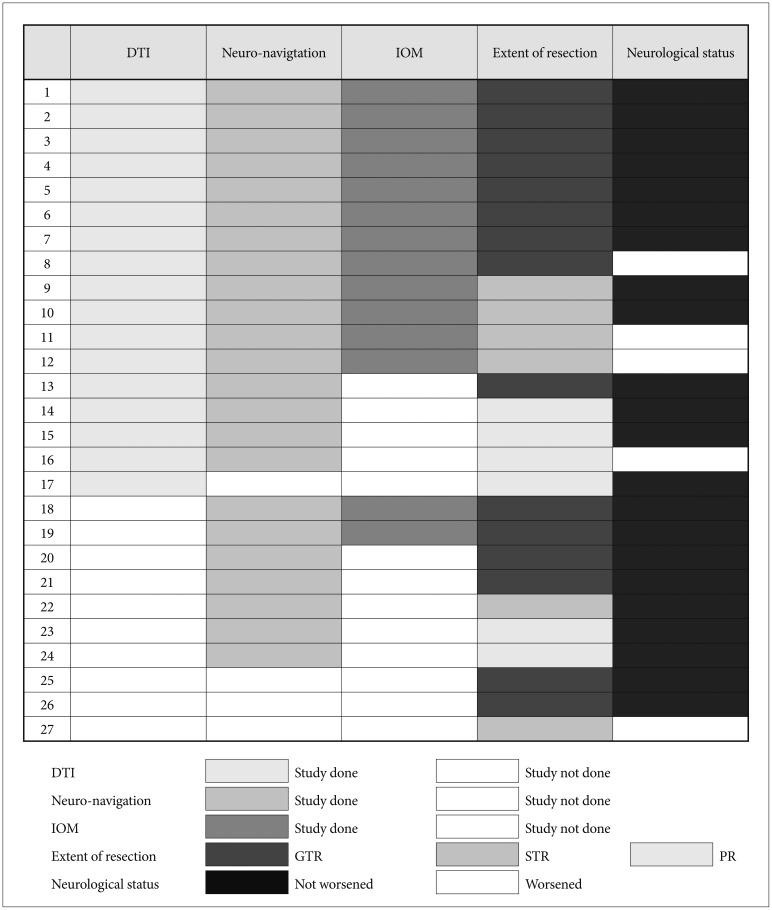
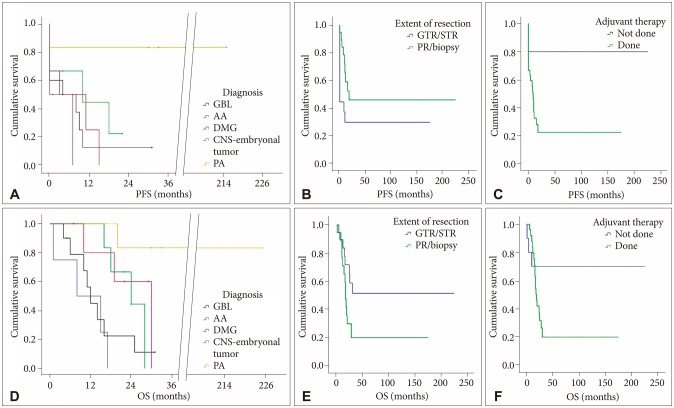

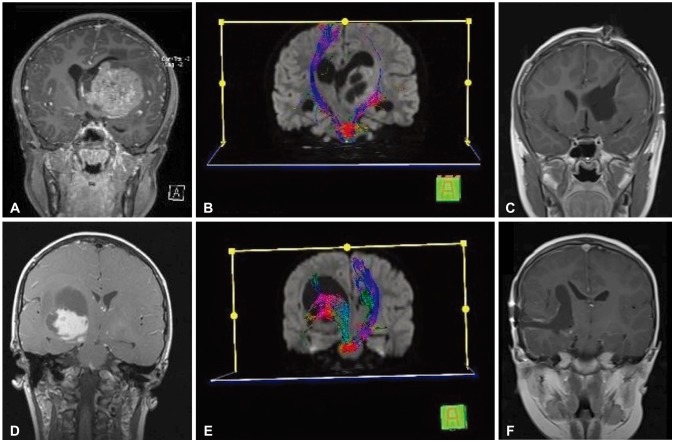




 PDF
PDF ePub
ePub Citation
Citation Print
Print


 XML Download
XML Download